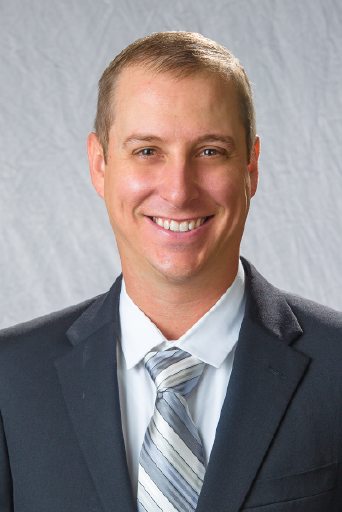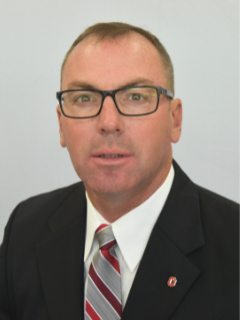
Date: Mon Jun 25, 2018
Time: 10:30 AM - 12:00 PM
Moderator: Cornelia Weltzien
The Flourish project aims to bridge the gap between current and desired capabilities of agricultural robots by developing an adaptable robotic solution for precision farming. Combining the aerial survey capabilities of a small autonomous multi-copter Unmanned Aerial Vehicle (UAV) with a multi-purpose agricultural Unmanned Ground Vehicle (UGV), the system will be able to survey a field from the air, perform targeted intervention on the ground, and provide detailed information for decision support, all with minimal user intervention. The system can be adapted to a wide range of farm management activities and to different crops by choosing different sensors, status indicators and ground treatment packages. The research project thereby touches a selection of topics addressed by ICPA such as sensor application in managing in-season crop variability, precision nutrient management and crop protection as well as remote sensing applications in precision agriculture and engineering technologies and advances.
This contribution will introduce the Flourish consortium and concept using the results of three years of active development, testing, and measuring in field campaigns. Two key parts of the project will be shown in more detail: First, mapping of the field by drones for detection of sugar beet nitrogen status variation and weed pressure in the field and second the perception of the UGV as related to weed classification and subsequent precision weed management.
The field mapping by means of an UAV will be shown for crop nitrogen status estimation and weed pressure with examples for subsequent crop management decision support. For nitrogen status, the results indicate that drones are up to the task to deliver crop nitrogen variability maps utilized for variable rate application that are of comparable quality to current on-tractor systems. The weed pressure mapping is viable as basis for the UGV showcase of precision weed management. For this, we show the automated image acquisition by the UGV and a subsequent plant classification with a four-step pipeline, differentiating crop from weed in real time. Advantages and disadvantages as well as future prospects of such approaches will be discussed.
A multi-faceted whole farm planning model was developed to compare conventional and autonomous machinery for grain crop production. Results suggested that autonomous machinery could be an economically viable alternative to conventional manned machinery if the establishment of intelligent controls was cost effective. An increase in net returns of 22% over operating with conventional machinery was found. This study also identified the break-even investment price for intelligent controls for the safe and reliable commercialization of autonomous machinery. Results indicated that the break-even investment price was highly variable depending on the financial benefits resulting from the deployment of autonomous machinery and farm size. The maximum break-even investment price for intelligent, autonomous controls was nearly U.S. $500,000.

Current development trends are associated with the digitization of production processes and the interconnection of individual information layers from multiple sources into common databases, contexts and functionalities. In order to automatic data collection of machine operating data, the farm tractors were equipped with monitoring units ITineris for continuous collection and transmission of information from tractors CAN Bus. All data sets are completed with GPS location data. Acreage of farm is 2,800 ha and a total of 26 monitoring units were installed since 2015. Data collection takes place continuously from switching-on to the switching-off of the tractor switchbox. Based on machine position information, it is possible to model the machine trajectory. The obtained data provides an overview of the time use of the tractors. These data are then compared with calculated models of optimal trajectory trajectories, based on the shape of the plot. A very small change in direction can be a significant reduction in riding length. With the changing of the azimuth by 1° the total length of rides was shorter about 577 m. An analysis of trajectories also reveals the locations of higher frequency and the accumulation of passes. During the season, some areas of the field are exposed to extreme loads. In terms of control data, there are important data about the working mode of the tractor and the level of the operator. During machine operation, the fuel consumption, working speed and engine speed were monitored. The recording of the working mode reflects the variability of the environment and reveals the variability of the work which was done at the same time.
The trend of acquiring equipment and obtaining high resolution remote sensed images by Unmanned Aerial Vehicles (UAV) have been followed by sugarcane producers in Brazil, given its low cost. The images taken from fields have been used for retrieval of information like Digital Terrain Models (DTMs) from stereoscopy of overlapping images and spatial variance of biomass. In sugarcane production, driving deviations occur during planting because of manual steering inaccuracy, sliding of machines sideways on terrain slopes, side offset of planter-tractor along curves and GNSS errors. Given the accuracy of identification of vegetation, a demand was presented by parties in the sugarcane sector to identify and extract vectorized lines along the plant rows. These lines must present a degree of accuracy to be used as guidance reference, in order to keep these machines confined in tracks to avoid damages to parallel rows (strict CTF - Controlled Traffic Farming). In addition, it is important to retrieve the spaces along the rows with absent plants to estimate yield impacts and identify possible intervention (re-planting). A methodology was created and implemented to: (1) extract an approximate vegetation index from an RGB image and apply a filter to identify pixel values in the center of the plant-rows; (2) re-create lines (straight and curved) using a procedure of building line-segments along points for multiple parallel lines and adjustable offsets; (3) obtain a local thresholding classification from VI values and fragment the lines upon the classified pixel values. The methodology was implemented with the use of free software by the development of three small applications created in an open-source programming platform.
Modern farming requires increasing amounts of data exchange among hardware and software systems. Precision agriculture technologies were meant to enable growers to have information at their fingertips to keep accurate farm records (and calculate production costs), improve decision-making and promote efficiencies in crop management, enable greater traceability, and so forth. The attainment of these goals has been limited by the plethora of proprietary, incompatible data formats among equipment manufactures and farm management information systems (FMIS), along with a lack of common semantics (meaning) in the industry. Proposed partial solutions exist; e.g., the ISO11783.10 standard XML format is well-known and respected, but it is machinery-specific and does not include business-process details needed by growers’ FMIS.
AgGateway is an industry consortium of 200+ companies in the agricultural industry. In 2013-14, its SPADE project explored the feasibility of the industrydeveloping an open-source format conversion toolkit. This experienceled to what is now its ADAPT Committee.
The ADAPT team created a common object model or "Application Data Model" (ADM), a super-set of field operations data models presented by participating companies. The goal: to replace the current, fragile situation, where FMIS must support multiple hardware data formats, and each machinery manufacturer has to interact with multiple software companies, with a single ADM integration mediated by a framework (currently built on .NET Framework 4.5.1 / .NET Core 2.x; ADAPT can run on Windows, Mac or Linux) from which manufacturer-specific plug-ins convert to and from proprietary formats. This enables the FMIS to read/write to a wide variety of systems with little incremental effort, using ADAPT as a form of a digital agriculture Rosetta Stone. A special emphasis was placed on developing a data-driven approach to managing geopolitical-context-dependent information, and on delivering shared meanings (semantic resources) through application programming interfaces (APIs).
Licensing is an important consideration when seeking to promote the wide adoption of a software platform. The ADAPT Committee selected the well-known, and broadly accepted, open-source Eclipse Public License for the ADM, the conversion framework, and community plug-ins. The licensing model for proprietary plug-ins is different from that of the community-supported tools: each plug-in writer can choose whatever licensing and distribution model best fits their business model.
Several machinery manufacturers have already begun writing plug-ins for their hardware; their projects are at different stages of development. There are currently two community-supported plug-ins: one to convert ISO ISO11783-10 XML files; and another to perform lossless serialization and de-serialization of ADM instances. The former serves as a template for machinery companies that use the ISOXML format to customize, and the latter enables FMIS-to-FMIS communication, a critically-important function that the industry has been lacking. Future plans for community-supported plug-ins include one for the Precision Agriculture Irrigation Language (PAIL) format, and another for sustainability metrics.
The ADAPT Committee has a GitHub repository for source code, exercises transparent governance, hosts an email list for questions (adapt.feedback@aggateway.org), and accepts contributions from outside AgGateway. The scope of ADAPT includes self-propelled machines, non-mechanicalprocesses, observations and measurements, and post-harvest traceability. The intention is for it to facilitate the growth of digital agriculture.
We're a nonprofit organization focused on connecting the data dots across food & agriculture with the following objectives:
We believe every farmer should have the ability to control their data and share it only with whom they select. The ADC seeks to facilitate this by creating a neutral data repository that is a safe and secure system built for farmers to manage the growing amount of data they need to run their operations.
The talk would focus on telling researchers about the ADC and its ability to facilitrate data collection and field studies.

